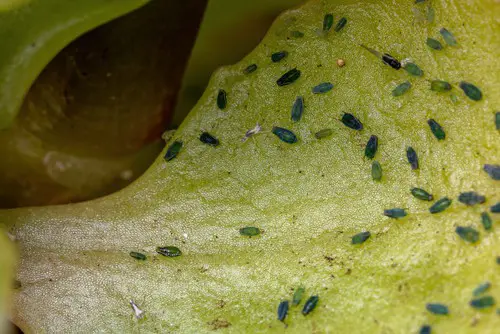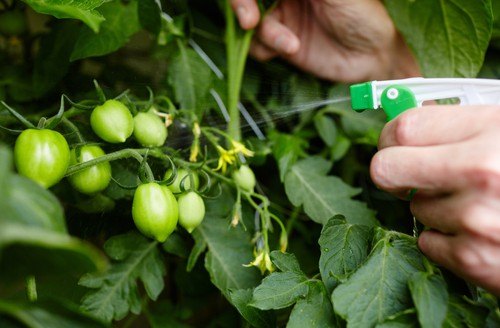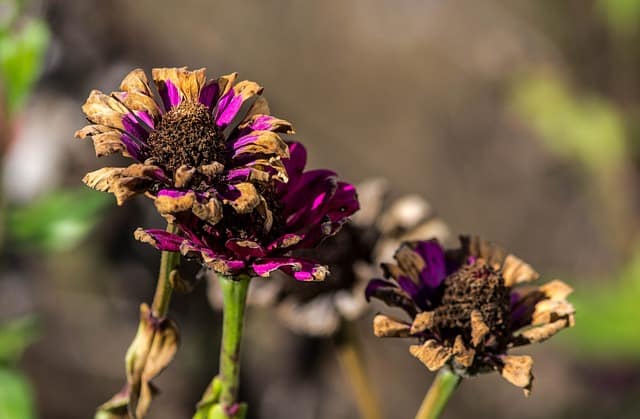Reviving a dying plant can be a daunting task, but with the right knowledge and tools, it is possible to bring it back to life. Hydrogen peroxide is one such tool that can help you revive your dying plant. Hydrogen peroxide is a powerful oxidizing agent that can help to kill bacteria, fungus, and mold that may be causing your plant to wilt or die.
Understanding the problem is the first step on how to revive a dying plant with hydrogen peroxide. Assessing the plant’s health is crucial to determine the underlying cause of the problem. The plant may be suffering from root rot, pests, or nutrient deficiencies.
Once the problem is identified, you can take the necessary steps to revive the plant. Hydrogen peroxide can be used to treat root rot, which is a common problem in plants.
Key Takeaways
- Hydrogen peroxide is a powerful tool that can help revive a dying plant.
- Understanding the problem and assessing the plant’s health is crucial before using hydrogen peroxide.
- Preparing and applying the hydrogen peroxide solution correctly can help to revive the plant.
Oher popular posts you shouldn’t miss on:
- How to Revive a Dying Palm Plant
- How to Revive a Dying Eucalyptus Plant
- How to Revive a Dying Corn Plant
Understanding the Problem

When a plant starts to show signs of distress, it can be a worrying time for any gardener. The first step in reviving a dying plant is to understand the problem. Plants can display a range of symptoms when they are not thriving, such as yellow leaves, brown or mushy stems, wilting, drooping, and other signs of distress.
One common reason for a plant to die is due to overwatering. When a plant is overwatered, the roots can become waterlogged, leading to a lack of oxygen and root rot. This can cause the plant to wilt, yellow, and eventually die.
On the other hand, underwatering can also cause a plant to die, as it can lead to the plant becoming dehydrated and unable to absorb nutrients.
Another common reason for a plant to die is due to diseases, such as fungal or bacterial infections. These can cause the leaves to turn brown or yellow, and the plant to wilt and droop. If left untreated, the plant can eventually die.
Hydrogen peroxide can be a useful tool in reviving a dying plant. It can help to eliminate harmful bacteria and fungi that may be causing the plant to die. It can also help to oxygenate the roots, which can promote new growth and help the plant to recover.
However, it is important to note that hydrogen peroxide should only be used in moderation. Using too much can damage the roots and harm the plant further. It is also important to diagnose the problem correctly before attempting to revive the plant, as hydrogen peroxide may not be effective in all cases.
Assessing the Plant’s Health
Before attempting to revive a dying plant with hydrogen peroxide, it’s important to assess the plant’s health. This will help determine if the plant is worth saving and if hydrogen peroxide is the best solution.
The first thing to look at is the overall health of the plant. Are the leaves wilted, yellow, or brown? Are there any signs of pests or disease? If the plant is severely damaged or diseased, it may not be worth saving.
Next, check the roots. Healthy roots are usually white or light-colored and firm to the touch. If the roots are black, mushy, or have a foul odor, the plant is likely beyond saving. However, if the roots are still healthy, there may be a chance to recover the plant.
If the plant is still alive but struggling, it’s important to determine what is causing the problem. Is it a lack of water, too much water, or poor soil quality? Once the problem is identified, steps can be taken to address it.
When assessing the plant’s health, it’s important to be realistic. Not all plants can be saved, and sometimes it’s best to start fresh with a new plant. However, if the plant has healthy roots and is worth saving, hydrogen peroxide can be an effective solution for reviving a dying plant.
The Role of Hydrogen Peroxide

Hydrogen peroxide is a powerful oxidizing agent that can help to revive a dying plant. It is a clear liquid that contains oxygen and can be found in most drugstores and supermarkets.
When hydrogen peroxide is applied to the soil, it breaks down into water and oxygen, which can help to improve the root system’s ability to absorb nutrients and water.
Hydrogen peroxide can also help to kill harmful bacteria and fungus that may be present in the soil. These microorganisms can cause root rot and other diseases that can cause a plant to wither and die. By inhibiting the growth of these harmful organisms, hydrogen peroxide can help to create a healthier environment for the plant to grow in.
In addition to killing bacteria and fungus, hydrogen peroxide can also help to inhibit the growth of mold and viruses. These microorganisms can also cause damage to a plant’s root system and can ultimately lead to the plant’s demise. By applying hydrogen peroxide to the soil, the plant can be protected from these harmful organisms.
It is important to note that while hydrogen peroxide can be beneficial to a plant, it should be used in moderation. Overuse of hydrogen peroxide can damage the plant’s root system and can ultimately lead to the plant’s death. It is recommended that hydrogen peroxide be used only when necessary and in the appropriate concentration.
Preparing the Hydrogen Peroxide Solution
To revive a dying plant with hydrogen peroxide, it is important to prepare a solution that is safe and effective. The solution should be properly diluted to avoid damaging the plant’s roots or leaves. Here are the steps to prepare the hydrogen peroxide solution:
1. Choose the right concentration: Hydrogen peroxide is available in different concentrations, ranging from 3% to 35%. For plant care purposes, it is recommended to use a 3% concentration solution. Higher concentrations can be too strong and may damage the plant.
2. Mix the solution: To prepare the solution, mix 50ml of 3% hydrogen peroxide with 4 litres of tap water. This creates a 60:1 ratio of water to hydrogen peroxide, which is the recommended dilution ratio.
3. Soak the roots: Once the solution is mixed, soak the plant’s roots in the solution for about 6 hours. This will help to kill any harmful bacteria or fungi that may be present in the soil.
4. Repot the plant: After soaking the roots, repot the plant in a new container with clean, fresh potting mix.
5. Water the plant: Water the plant with the same hydrogen peroxide solution and leave it in the shade for a few days. This will give the plant time to recover and adjust to its new environment.
It is important to note that hydrogen peroxide can be harmful if not properly diluted. Always follow the recommended dilution ratio and avoid using concentrated hydrogen peroxide directly on the plant.
Applying the Solution

Once the hydrogen peroxide solution has been mixed, it’s time to apply it to the plant. The solution can be applied in a few different ways, depending on the size and type of plant.
One option is to use a spray bottle to mist the solution onto the plant’s leaves. This can be a good option for smaller plants or for plants with delicate leaves that might be damaged by direct contact with the solution. Be sure to cover the entire surface of the leaves with the mist.
For larger plants, it may be necessary to apply the solution directly to the surface of the soil. This can be done by pouring the solution onto the soil or by using a watering can to distribute the solution evenly over the surface. Be sure to apply enough solution to thoroughly saturate the soil.
It’s important to note that the solution should not be applied directly to the roots of the plant. Instead, the solution should be applied to the surface of the soil, where it will be absorbed by the roots.
After applying the solution, it’s important to monitor the plant closely to see how it responds. In some cases, the plant may begin to show signs of improvement within a few hours or days. In other cases, it may take longer for the plant to show signs of improvement.
If the plant does not show signs of improvement after a few days, it may be necessary to repeat the application of the hydrogen peroxide solution. Be sure to follow the same steps as before, applying the solution to the surface of the soil or misting it onto the leaves.
Repotting the Plant
If the plant is severely damaged, repotting may be required. Before repotting, prepare a new container with fresh potting mix. Make sure the container has proper drainage holes to prevent waterlogging.
To begin repotting, gently remove the plant from its current pot. If the roots are tightly packed, use a clean knife or shears to loosen them. Inspect the roots for any signs of rot or damage. If any roots appear rotten, trim them off with clean shears.
Next, place the plant in the new container and fill it with fresh potting mix. Make sure the plant is positioned at the same depth as it was in the previous pot. Firmly press the soil around the plant to eliminate any air pockets.
Water the plant with the hydrogen peroxide solution and place it in a shaded area for a few days. This will allow the plant to adjust to its new environment.
After a few days, check the soil moisture level. Water the plant only when the soil is dry to the touch. Overwatering can lead to root rot, so be careful not to overdo it.
If the plant shows signs of new growth, it is on the road to recovery. Keep an eye on it and continue to care for it properly.
Care After Treatment

After treating a dying plant with hydrogen peroxide, it is essential to provide proper care to ensure its full recovery. Here are some essential tips to follow:
1. Watering
Overwatering can cause root rot, which is a common problem in dying plants. After treatment, make sure to water the plant only when the soil is dry to the touch. Use rainwater if possible, as it does not contain chemicals that can harm the plant.
2. Sunlight
Plants need sunlight to grow, but too much sun can also damage them. After treatment, place the plant in a location that receives adequate sunlight, but not direct sunlight. If the plant was previously exposed to too much sun, gradually introduce it to a shadier location to prevent sunburn.
3. Nutrients
Plants need nutrients to grow and thrive. After treatment, make sure to fertilize the plant regularly with a balanced fertilizer. Follow the instructions on the package to avoid over-fertilizing, which can also harm the plant.
4. Conditions
Different plants have different requirements for growth. After treatment, make sure to research the specific needs of the plant and provide the right conditions. For example, some plants prefer high humidity, while others need well-draining soil.
5. Pests and Diseases
Pests and diseases can also harm plants. After treatment, make sure to monitor the plant for any signs of infestation or disease. If you notice any issues, take immediate action to prevent further damage.
Preventing Future Issues

After successfully reviving a dying plant with hydrogen peroxide, it is important to take steps to prevent future issues. Here are some tips to keep your plants healthy:
1. Watering
Overwatering is a common issue that can lead to root rot and other problems. To avoid this, make sure to water your plants only when the top inch of soil is dry. Use a watering can with a spout to avoid getting water on the leaves, which can lead to fungal issues.
2. Pests
Pests can quickly damage your plants. Keep an eye out for pests such as aphids, spider mites, and whiteflies. Use scissors to remove any affected leaves and dispose of them properly. You can also use a non-toxic pest control additive to keep pests at bay.
3. Soil
The quality of your soil is crucial for plant health. Use high-quality compost and mulch to improve soil structure and nutrient content. Epsom salt and baking soda can also be added to the soil to provide magnesium and reduce acidity, respectively.
4. New Stems
To encourage new growth, make sure to prune your plants regularly. Use clean scissors to remove dead or damaged stems. You can also use a green cast to support new stems as they grow.
5. Hydrogen Peroxide Concentrations
When using hydrogen peroxide to revive a dying plant, it is important to use the correct concentration. A 3% solution is generally safe for most plants. However, some plants may require a lower concentration. Always dilute the hydrogen peroxide before using it on your plants.
By following these tips, you can help prevent future issues with your plants and keep them healthy and thriving.
Monitoring for Improvement

After following the steps to revive a dying plant with hydrogen peroxide, it is important to monitor the plant for improvement. This will help determine if the treatment was successful and if any further action is needed.
One way to monitor for improvement is to observe the plant for new growth. This can include new leaves, buds, or stems. It is important to note that it may take some time for new growth to appear, so patience is key.
Another way to monitor for improvement is to check the soil moisture level. The soil should be moist but not waterlogged. Overwatering can lead to root rot, which can be fatal for the plant. Underwatering can also cause the plant to continue to wilt and eventually die.
In addition to observing the plant and checking the soil moisture level, it is important to continue to care for the plant properly. This includes providing adequate sunlight, fertilizing as needed, and pruning any dead or damaged leaves or stems.
If after a few weeks the plant does not show any signs of improvement, it may be necessary to repeat the hydrogen peroxide treatment or seek additional advice from a gardening expert.
Frequently Asked Questions
What happens if I put hydrogen peroxide on my plants?
Hydrogen peroxide can be beneficial for plants when used in the right way. It can help to kill harmful bacteria and fungus that may be causing your plant to wilt or die.
However, if not used properly, hydrogen peroxide can also harm your plants. It’s important to dilute the hydrogen peroxide with water before using it on your plants, and to use it sparingly.
Is it OK to water plants with hydrogen peroxide?
Yes, it is safe to water plants with hydrogen peroxide as long as it is properly diluted. The recommended ratio for watering plants with hydrogen peroxide is one part hydrogen peroxide to ten parts water.
This can help to oxygenate the soil and kill any harmful bacteria or fungus that may be present.
How do you revive a plant with hydrogen peroxide?
To revive a dying plant with hydrogen peroxide, you can mix 50ml of hydrogen peroxide 3% with 4 liters of water. Soak the roots of the plant in this solution for about 6 hours, then replant in a new container with fresh potting mix.
Water the plant with the same solution and leave it in the shade for a few days.
When is it too late to revive a plant?
It may be too late to revive a plant if it has already turned completely brown or black and is no longer producing new growth. However, if there is still some greenery or signs of life, there may still be a chance to revive it with proper care and treatment.
Can baking soda and hydrogen peroxide help revive a dying plant?
Baking soda and hydrogen peroxide can be used together to help revive a dying plant. Mix one tablespoon of baking soda with one tablespoon of hydrogen peroxide and one tablespoon of dish soap in one gallon of water. Use this solution to water your plant once a week.
How long can I leave a plant in hydrogen peroxide?
It is recommended to soak the roots of a plant in a hydrogen peroxide solution for about 6 hours. Leaving the plant in the solution for too long can cause damage to the roots and harm the plant.
It’s important to follow the recommended guidelines for using hydrogen peroxide on plants to avoid causing any harm.

Hey, I’m Lisa and I’ve been an avid gardener for over 30 years. I love writing, talking and living in the garden! Feel free to connect with me on my socials below


